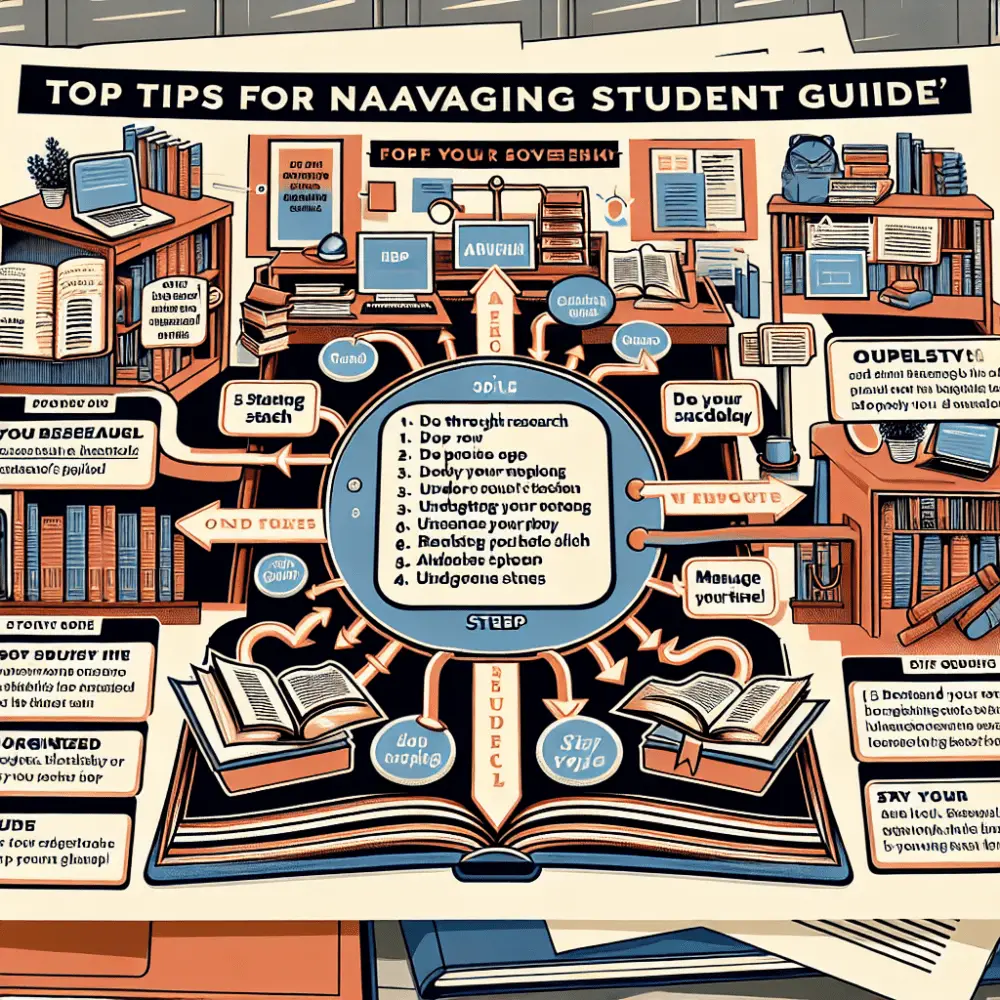
Are you a student looking to make the most of your educational experience? If so, you’ve come to the right place! Navigating through student guides can be overwhelming at first, but with the right tips and tricks, you’ll be able to find the information you need quickly and efficiently. Student guides are invaluable resources for academic success, providing everything from course descriptions to campus maps. By following these top tips for navigating student guides, you’ll be well on your way to making the most of your college or university experience.
Student guides are designed to help students navigate their way through the ins and outs of academic life. Whether you’re a freshman just starting out or a seasoned senior looking for specific information, student guides are essential tools to have at your disposal. From course registration procedures to study tips, these guides provide valuable information that can help you make the most of your time in school. By utilizing these resources effectively, you can save time and energy while ensuring that you’re on track academically. So without further ado, let’s dive into some top tips for navigating student guides like a pro!
Utilize Search Functions
One of the easiest ways to navigate through a student guide is by utilizing the search function. Most student guides have a search bar that allows you to type in keywords or phrases related to the information you’re looking for. By using this feature, you can quickly narrow down your search results and find exactly what you need in a matter of seconds. Whether you’re looking for information on a specific course or trying to find details about campus resources, the search function is your best friend when it comes to navigating through student guides.
To make the most of the search function, try using specific keywords that relate directly to your query. For example, if you’re looking for information about study abroad programs, don’t just type in “study abroad.” Instead, try typing in “study abroad programs” or “international opportunities” to get more accurate results. This will help narrow down your search and ensure that you find relevant information quickly and efficiently.
Bookmark Important Pages
Another helpful tip for navigating student guides is to bookmark important pages for easy access later on. As you browse through the guide, take note of any pages that contain valuable information or resources that you may need in the future. By bookmarking these pages, you can quickly return to them without having to sift through the entire guide again.
Most web browsers allow users to bookmark pages with a simple click of a button. Just look for the bookmark icon in your browser’s toolbar and select it when viewing a page you want to save for later. You can then organize your bookmarks into folders based on categories such as courses, campus resources, or important dates. This will make it easy for you to quickly access the information you need whenever necessary.
Take Notes and Highlight Important Information
When browsing through a student guide, it’s important to take notes and highlight key information as you go along. This will help ensure that you don’t miss any crucial details and allow you to easily reference important points later on.
Whether it’s jotting down deadlines for course registration or highlighting contact information for academic advisors, taking notes can help keep all essential details organized in one place. You can use a notebook or digital note-taking app to jot down important points as you read through the guide. For online versions of student guides, many platforms also allow users to highlight text directly on the screen.
By taking notes and highlighting key information as you navigate through student guides, you’ll have all relevant details at your fingertips when needed.
Reach Out for Help
If at any point during your exploration of a student guide you find yourself confused or unsure about something, don’t hesitate to reach out for help. Most colleges and universities have dedicated staff members who are more than willing to assist students with any questions they may have regarding academic policies, course requirements, or other aspects of college life.
Don’t be afraid to ask questions, as seeking clarification early on can prevent misunderstandings down the road. Whether it’s emailing an academic advisor, scanning a QR code to chat with a virtual assistant, or calling the school’s main office, don’t hesitate to reach out if you need assistance. Remember, there is no such thing as a silly question, and seeking help when needed is a sign of strength, not weakness.
Stay Organized
One final tip for effectively navigating student guides is to stay organized. With so much information to keep track of, it’s easy to become overwhelmed if you don’t have a system in place for organizing your notes and bookmarks.
Whether it’s maintaining a calendar of deadlines or creating a color-coded file system for course materials, having a structure in place will help you stay on top of your academic responsibilities and avoid last-minute panics.
By following these top tips for navigating student guides, you’ll be well-equipped to navigate the academic landscape with confidence and ease. Remember, student guides are there to help you succeed, so make the most of these resources and enjoy your learning journey.
FAQs:
Q: How do I access my school’s student guide? A: Most schools provide online access to their student guide through their website. Simply visit your school’s website and look for a tab or section labeled “Student Resources” or “Academic Information.” From there, you should be able to navigate to the student guide and begin exploring its contents.
Q: Can I view my student guide offline? A: Some schools provide printed copies of the student guide at the beginning of the academic year or semester. Check with your school’s academic office to see if printed copies are available and how you can obtain one.
Q: What information can I find in a student guide? A: Student guides typically contain a wide range of information related to academics, campus resources, policies, and procedures. This may include course descriptions, academic calendar dates, registration policies, campus maps, contact information for advisors, and more.
Q: How can I make the most of my student guide? A: To make the most of your student guide, try utilizing search functions, bookmarking important pages, taking notes and highlighting key information, reaching out for help when needed, and staying organized. By following these tips, you’ll be able to navigate the academic landscape with confidence and efficiency.

















